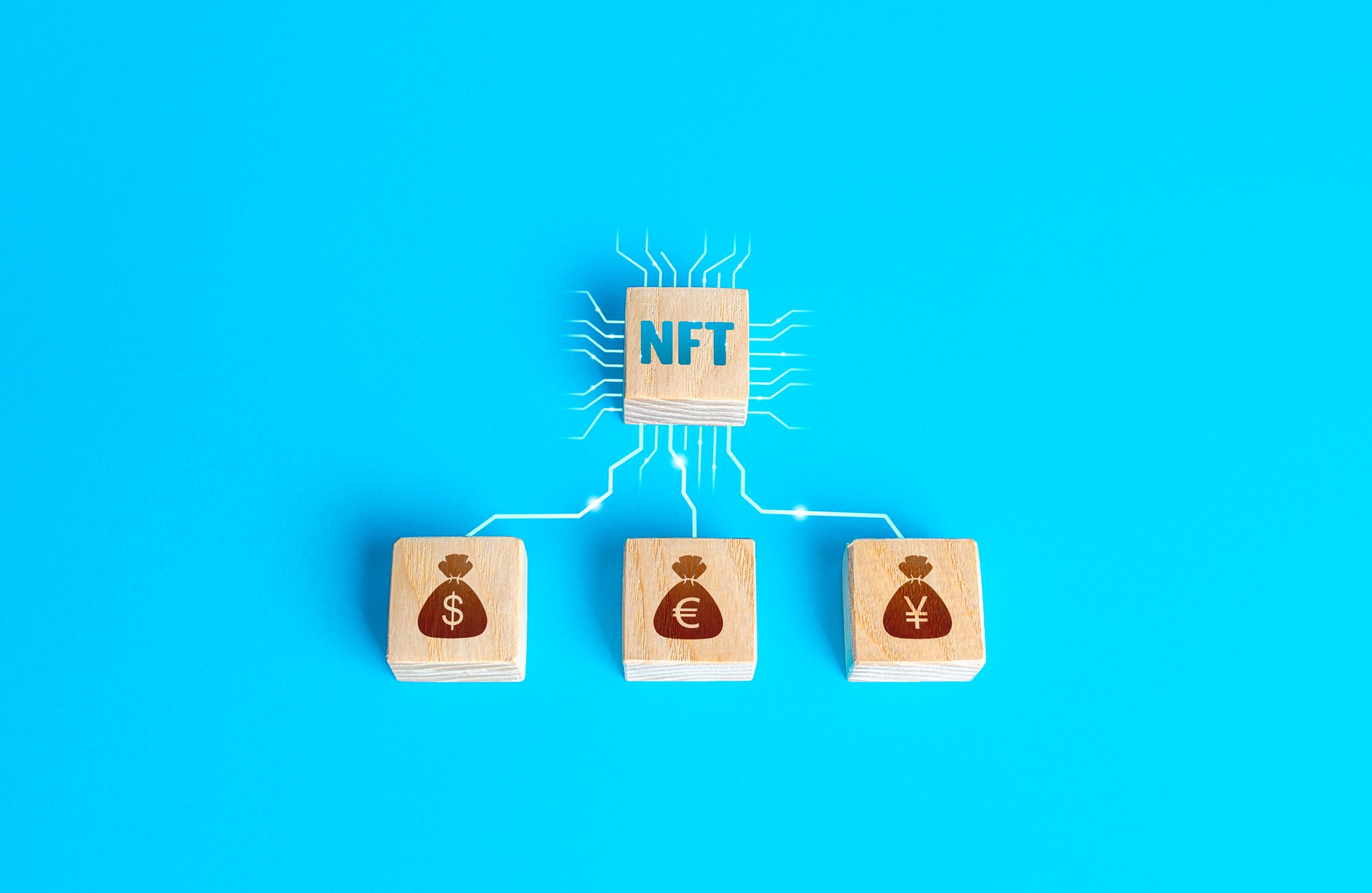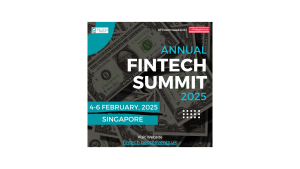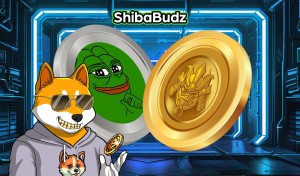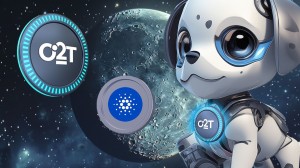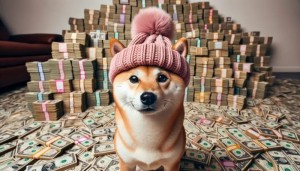Crypto art is a relatively new market that revolves around digital artworks registered and traded on blockchains as non-fungible tokens (NFTs). Each digital artwork in the form of NFTs is unique and has its own value.
But, it is not just about artists and art, it is all digital. The emerging technology was popularized around 2017 with CryptoPunks – digital collectibles, and CryptoKitties – crypto game that allows you to buy and sell digital cats as NFTs. Today, the NFT craze reaches new heights with sales of tweets, digital trading cards, memes, and videos.
In February, a GIF showing a rainbow cat famous in the internet sphere called “Nyan Cat” was sold for 300 Ethereum, or about $580,000. Around the same time, a clip of basketball player LeBron James performing a spectacular act was bought through the NFT platform “NBA Top Shot” for the equivalent of US $208,000.
On March 11, the famous auction house Christie’s sold a digital collage of images called “Everydays: The First 5,000 Days” for $69.3 million. This sale made Mike Winkelmann, also known as Beeple, as the third most expensive living artist in history, second only to David Hockney and Jeff Koons, the only two living artists to be sold for values like that.
Since almost anything can be converted into tokens and sold if customers want, the fever goes beyond images. Kings of Leon, a rock band, sold their latest album as an NFT for $6 million. The title of the album is “When you see yourself”, the band decided to make it an NFT that contains bonuses, an animated cover, as well as a limited edition vinyl. It was released on March 5 in collaboration with YellowHeart – a blockchain-based NFT platform.
Another major record of more expensive NFT was the sale of the first-ever tweet. Jack Dorsey, the founder of the social network, put up for sale the unprecedented piece of digital information, associated with a specific NFT, which eventually sold for $2.9 million. The buyer, named Sina Estavi, mentioned at the time feeling like he was “buying the Mona Lisa.”
NFTs, explained
NFT stands for Non-fungible token. Just as Decentralized Finance Protocols (DeFi) mimic the financial products of banks, brokerages, insurance and loan companies – NFTs mimic the world of traditional art galleries, stores and museums. Without expensive and risky mediators.
This is possible with smart contracts, originally born in Ethereum. This kind of programmable blockchain can serve a wide range of decentralized applications. In other words, NFT marketplaces are dApps (decentralized apps) that bring the entire NFT economy to life by connecting content creators and artists directly to a buyer or collector. This makes it much easier for both parties to enter the market, thus eliminating the usual barriers to entry.
NFTs themselves are a type of digital token – ERC-721 – that are not divisible or fungible and do not have the same value, because each NFT has unique properties and attributes that differentiate them from one another. Their value comes from the blockchain technology’s guarantee that every NFT cannot be counterfeited. In addition, their entire transaction history is traceable and verifiable as a fully digital asset, be it artwork, trading cards, baseball cards, music, video, 3D animation, gaming assets, etc.
This unique virtual token can serve as a certificate for anything and everything, be it physical art or digital art. Only its holder can prove its ownership, and it is possible to check the evolution of this token throughout its life.
What does NFT mean in art?
However, NFTs have been used in the art world since 2017. This is explained by the fact that these non-fungible tokens have certain advantages. Until then, the problem with digital art was its reproducibility. In essence, digital works can be copied. A single holder could indeed reproduce several identical copies of digital work. But blockchain, of which NFT (Non-fungible token) is a part, has allowed the implementation of limited editions.
Artists can not only register their works in a certified, decentralized registry, but they can also create unique copies or limited editions of their works in digital form while sending them to the Internet and preserving their rarity and authenticity.
In addition, these digital tokens imply better copyright management on the Internet. The works are recorded directly on a blockchain that also contains the metadata describing each person’s contributions, as well as the rights associated with each of those contributions.
Here are two things that NFT tokens means a lot to art:
- Certificate of digital ownership
Whether it is art, music, audiovisual, or social media content, each NFT has a certificate of authenticity, which makes the work unique.
The information in this certificate is diverse, traceability, creator, creation date, but also transaction history. In this way there is only one possible owner and no risk of copying.
It can also be used to represent physical goods such as a house, a sculpture, a painting, which allows you to eliminate intermediaries and so the artist contacts the public directly, eliminating orders.
If you are an artist, NFTs are a good way to protect yourself from copying. In fact, when you convert your work into a “token,” you get a blockchain code that certifies that you are the owner. If you decide to sell your work, you give this certificate of authenticity to the buyer.
The possibilities of digital art are endless, music, drawing, video, GIF, tweet or any digital file that can be tokenized.
- Royalties
NFTs offer two more advantages. On the one hand, the digital artist can attest to the authenticity of a work and on the other, receive royalties from any resale, this” resale right “often amounts to between 2.5 to 10%.”
With NFTs the creator or artist will have the possibility to present at auctions different types of creations through specific platforms such as Foundation, SuperRare, Rarible, OpenSea, MakersPlace and Nifty Gateway.
Why buy a JPG instead of copying or downloading it?
A question that often arises is that of copying. What is the point of buying an image for $69 million when they are available anywhere on the net and can be easily downloaded and admired? Quite simply for the art and the joy of owning something unique.
In seconds, you will find reproductions of the Mona Lisa or works by Vincent van Gogh on the Internet, and nothing is stopping you from downloading it, printing it, and hanging it in your living room. No matter how good that copy is, you will never have the original works of Vincent van Gogh or the Mona Lisa made by Leonardo da Vinci.
As said before, NFTs do not stop only at digital art and can also attest to the authenticity of a physical object or other virtual elements, as well as their traceability and history. For some, it may even be the next notable evolution in art.
Is NFT art a good investment?
There are online marketplaces where you can browse digital artwork and buy whatever you want. You can call them galleries.
Besides the aesthetic aspect, buying NFTs can be a good investment. Technically, an NFT can serve as a certificate for anything. A famous painting, an official pair of sneakers (like NIKE’s CryptoKicks). It is easy to prove that you own a painting or a pair of shoes.
But most of all, it is a real revolution in the art world, as any digital creation can now be identified and recognized as a unique work, gaining value immediately, like everything unique. Some things, like memes, can be considered unique works.
Advantages of NFT for artists and art creators
For artists or art creators, NFTs make it possible to gain something unique from their creations. On the other hand, this represents the return of power and control to the hands of the creator of the work or artist who can choose to sell his or her art in a one-time deal or create constant revenue streams. In the latter case, all that is required is to encrypt the NFT so that the original creator makes money each time the digital token is traded on the secondary market, usually for 2.5% to 10% of the sale price.
Creators, on the other hand, can use NFTs to monetize their work directly to a larger audience.
Advantages of NFT art for the buyer or collector
For traditional collectors or buyers, NFTs provide secure certificates of unique ownership over a digital or real-world object, thus protecting the value of the asset.
Those who buy art are usually driven by scarcity and may have the status of being the sole owner of a particular work. It can also be seen as a way to speculate in the market. They can be bought and sold at a profit in an NFT market if the value increases.
On the other hand, there are collectibles from companies, brands, and artists that when you collect them you get rewards, discounts, and certain privileges. For example, WePlay Collectibles are for people who want to be part of Esports events and show that they like players and talents in a different way, in addition to merchandising. The WePlay Collectibles are part of a platform, where you can buy items with new technology – both digital and physical. They are rewards and items associated with a specific tournament.
Find more information about the platform and NFTs at https://weplaycollectibles.com/
Where can I sell digital art?
In addition to investing in crypto art, you may be interested in becoming an artist and selling digital art. Currently, there are many platforms to publish and trade crypto art.
At the time of writing this article these are the most popular NFT marketplaces:
- OpenSea
OpenSea is also referred to as the first and largest marketplace for creator-owned digital assets. The platform has over 300,000 users, 34 million items or NFTs, and 1 million collections in various categories. One of the great features of this site is its easy-to-follow integration experience for users who are new to the NFT space – equipped with many easy-to-understand tutorials on how to choose the best crypto wallet, how to list your work, how to buy and sell any item, and more.
In addition, OpenSea offers sellers the ability to create a showcase to display their work, which has yet to be seen in many other NFT marketplaces. With so much volume on OpenSea, it can be difficult to stand out in the crowd, but it presents an equal opportunity for many collectors interested in buying your work!
On the seller side, OpenSea offers a very reasonable fee structure: you pay no fees to list your piece, and the resulting transaction costs are borne by the buyers.
- Rarible
Founded in early 2020, Rarible is a community-run marketplace that focuses on fine art collections. While Rarible provides a nice integration experience, the platform seems better suited for users with advanced crypto and is not as intuitive for beginners as OpenSea. Also, the fees can be quite high on the seller’s side as well – bearing the gas fees for each bid received, as well as the gas/transaction fees each time a piece is sold.
That said, Rarible is one of the leading marketplaces for NFT art with a high volume of users and NFTs. With the best selling works on this site, your work is bound to be surrounded by the big names in the NFT space.
- SuperRare
In order for your works to be listed on this platform, you need to go through the application process. SuperRare is one of the leading destinations for crypto art. Also described as Christie’s meets Instagram, SuperRare is a highly organized marketplace that emphasizes quality over quantity. Transactions on the platform are smooth and its pricing structure is simple – the fee is 3% for all purchases and paid by the buyer. If you are lucky enough to be accepted on SuperRare.
- Nifty Gateway
Nifty Gateway is an exclusive marketplace for elite artists and creators, and their mission is to make NFT art accessible to everyone. They are known for essentially creating excitement around limited editions for artists on their marketplace – making drops every 3 weeks, selling out regularly. They also allow artists to participate in secondary markets and set royalties easily.
- Foundation
Foundation is a community-curated NFT Marketplace focused on digital artists. The growth of the community is in the hands of the creators, who must send invitation links to other creators to also participate in this platform. However, Creating and setting up a creator or artist profile, connecting a digital wallet, and then starting to run auctions on this platform are extremely easy processes.
- Zora
Zora is another NFT marketplace where for you to list an artwork you need to go through the submission process. Their ease of use comes from the simple user interface they use on the site, as well as their attentive support. This platform also has a Discord Community where you can connect with other NFT artists and creators and get a feel for how to navigate the marketplace. However, this is a no-fee marketplace for buying and selling. The only cost comes from the gas fee when registering your art.
Controversy between NFTs and Carbon Footprint
There is a lot of criticism of the NFT market because of doubts about the economic dangers and environmental impact it can bring.
The Ethereum blockchain where most NFTs are stored is particularly energy-intensive, because in order to make transactions secure and in the decentralized form it is necessary that many computers that enable its existence have to be running continuously, which means a high energy cost, and this coupled with the fact that most of this equipment uses fossil fuels.
In fact, blockchain technology consumes a lot of energy because of the computing power required. Thus, the Bitcoin network uses gigawatts of continuous power or tens of tons of CO2 per day.
But the Ethereum Foundation announced that it will upgrade the Ethereum blockchain to Ethereum 2.0, which means that the platform will stop using Proof-of-Work (PoW) and will switch to Proof-of-Step (PoS), to make the blockchain 99.9% greener properly.
